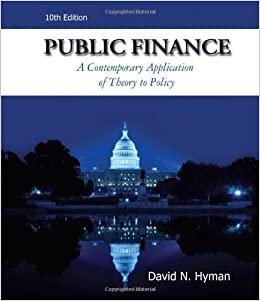Answered step by step
Verified Expert Solution
Question
1 Approved Answer
John Crockett Furniture Company is considering adding a new line to its product mix, and the capital budgeting analysis is being conducted by Joan Samuel,
John Crockett Furniture Company is considering adding a new line to its product mix, and the capital
budgeting analysis is being conducted by Joan Samuel, a recently graduated finance MBA. The production line would
be set up in unused space in Crocketts main plant. The machinerys invoice price would be approximately $;
another $ in shipping charges would be required; and it would cost an additional $ to install the
equipment. Further, the firms inventories would have to be increased by $ to handle the new line, but its
accounts payable would rise by $ The machinery has an economic life of years, and Crockett has obtained
a special tax ruling that places the equipment in the MACRS year class. The machinery is expected to have a
salvage value of $ after years of use. The new line would generate $ in incremental net revenues
before taxes and excluding depreciation in each of the next years. The firms tax rate is and its overall
weighted average cost of capital is
a Construct the projects cash flows over its fouryear life. Based on these cash flows, what are the projects
NPV and IRR? Do these indicators suggest that the project should be undertaken?
b Assume now that the project is a replacement project rather than a new, or expansion, project. Describe
how the analysis would differ for a replacement project.
c Explain what is meant by cash flow estimation bias. What are some steps that Crocketts management
could take to eliminate the incentives for bias in the decision process?
d In an unrelated analysis, Joan was asked to choose between the following two mutually exclusive projects:
Expected Net Cash Flow
Year Project S Project L
$$
The project provides a necessary service, so whichever one is selected is expected to be repeated into the
foreseeable future. Both projects have a cost of capital.
points What is each projects initial NPV without replication? Can you use the information to determine
which project should be chosen? Explain.
points Now apply the replacement chain approach to determine the projects extended NPVs Which project
should be chosen? Explain.
points Repeat the analysis using the equivalent annual annuity approach. Which project should be chosen?
Explain.
points Now assume that the cost to replicate Project S in two years will increase to $ because of
inflationary pressures. How should the analysis be handled now, and which project should be chosen? Explain.
Step by Step Solution
There are 3 Steps involved in it
Step: 1

Get Instant Access to Expert-Tailored Solutions
See step-by-step solutions with expert insights and AI powered tools for academic success
Step: 2

Step: 3

Ace Your Homework with AI
Get the answers you need in no time with our AI-driven, step-by-step assistance
Get Started


